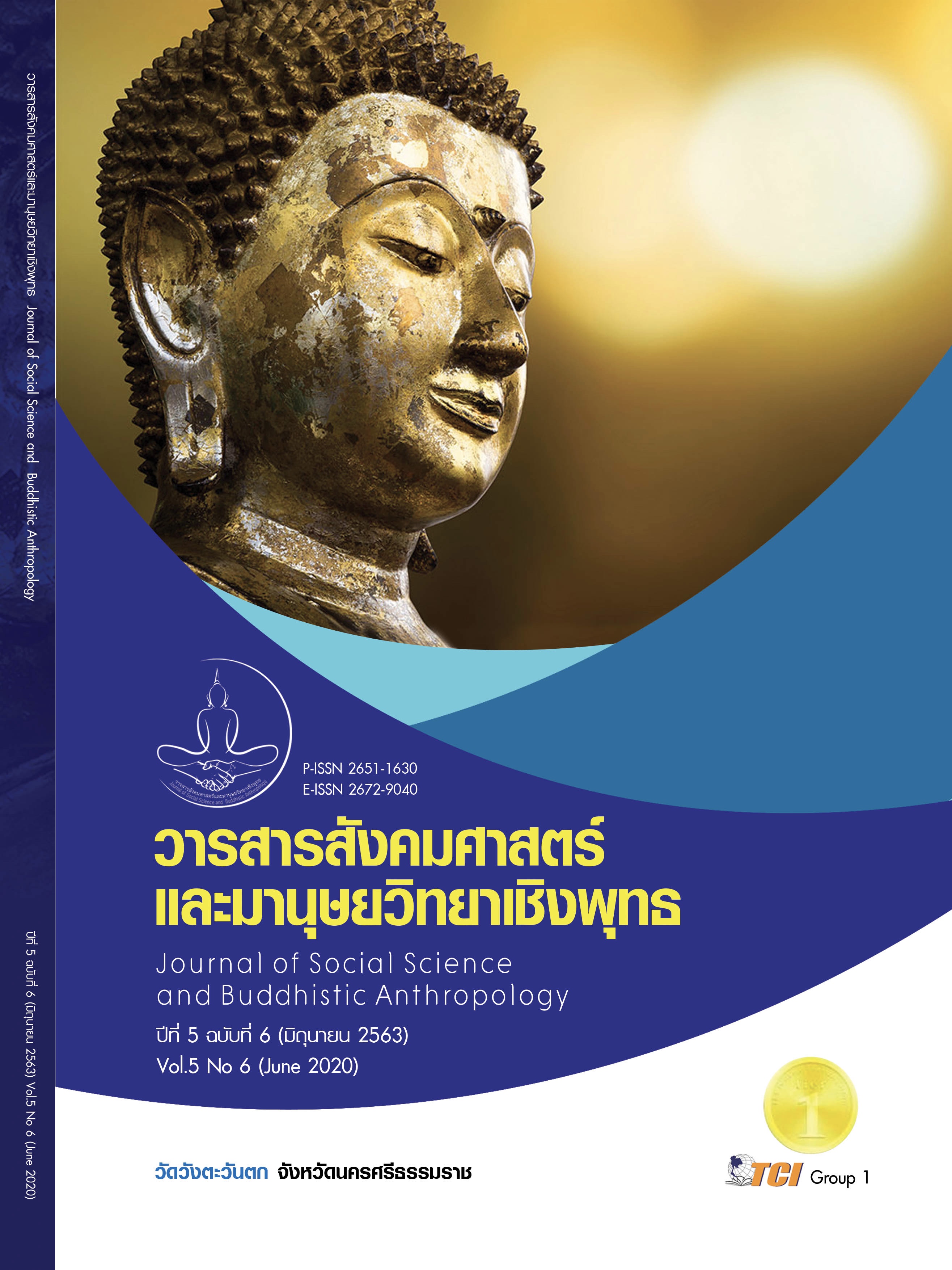THE ASSETS MANAGEMENT OF BUDDHIST ECCLESIASTICAL OFFICIAL MONKS SURATTHANI PROVINCE
Keywords:
Management, Buddhist Monks, AssetAbstract
The objective of this research paper is 1) to study the management of the assets of monks 2) Study the problems and obstacles of the management of the assets of the Sangha Administrative Officer 3) in order to propose the guidelines for the management of the assets of the Sangha Administrator in Suratthani Province. Is a qualitative research There are 7 areas of content, consisting of 1) planning 2) organization 3) staffing 4) administration 5) coordination 6) reporting and 7) budgeting. The important informants are 2 groups, namely Sangha Administrative Administrator. 15 Abbots, 2 Buddhist scholars from the total of 17 monks / persons. In-depth interview using the descriptive content analysis technique. The result of the research shows that the property management of Sangha Administrative Monks. Make a plan before starting work. Explore general information before planning a policy. Main objective Prepare annual action plan by appointing someone who is knowledgeable and capable to participate in solving problems Specify the responsible person in each operation section. Maintain good personnel with the ability to make decisions, make clear orders Coordination by control methods and report the results together, solve the form, use short-term budget Which adheres to the dharma discipline Problems and obstacles of assets management the agency lacks organization model updates. Long-term planning and the lack of ability to adapt to the situation that affects the budget management Solved by training, seminars, create understanding, learn together. The guidelines for asset management use the "POMKPC MODEL" model, consisting of sub -components such as organizational development planning (PO), administration and job knowledge (MK), personality and character (PC).
References
กนก แสนประเสริฐ และคณะ. (2545). การจัดการดูแลทรัพย์สินและศาสนาสมบัติของวัด. ใน รายงานวิจัยสัมมนาเชิงปฏิบัติการเกี่ยวกับการจัดการสำหรับนักบริหาร. สถาบันบัณฑิตพัฒนบริหารศาสตร์.
กรมการศาสนา กระทรวงศึกษาธิการ. (2542). หนังสือคู่มือพระสังฆาธิการว่าด้วยพระราชบัญญัติกฎระเบียบและคำสั่งของคณะสงฆ์. กรุงเทพมหานคร: โรงพิมพ์การศาสนา.
เฉียบ ไทยยิ่ง. (2541). ปัจจัยที่ส่งผลต่อความสำเร็จของเจ้าอาวาสในการพัฒนาวัดให้เป็นศูนย์กลางชุมชน กรณีศึกษา: ภาคเหนือและภาคตะวันออกเฉียงเหนือ. กรุงเทพมหานคร: กองแผนงาน กรมการศาสนา.
ณดา จันทร์สม. (2555). การบริหารการเงินของวัดในประเทศไทย: ความสอดคล้องตามหลักธรรมาภิบาล. วารสารพัฒนบริหารศาสตร์, 54(1), 107-141.
พระธรรมโกศาจารย์ (ประยูร ธมฺมจิตฺโต). (2549). พุทธวิธีการบริหาร. กรุงเทพมหานคร: มหาวิทยาลัยมหาจุฬาลงกรณราชวิทยาลัย.
พระมหาวีระชัย ชยวีโร. (2556). การพัฒนาประสิทธิภาพการจัดการศาสนสมบัติวัดของคณะสงฆ์ไทย. ใน วิทยานิพนธ์พุทธศาสตรดุษฎีบัณฑิต สาขาพระพุทธศาสนา. มหาวิทยาลัยมหาจุฬาลงกรณราชวิทยาลัย.
พระราชญาณวิสิฐ (เสริมชัย ชยมงฺคโล). (2548). การบริหารวัด. นครปฐม: เพชรเกษมการพิมพ์.
พระอำนวย หมอกเมฆ. (2553). กลยุทธ์การบริหารวัดในพระพุทธศาสนาสำหรับเจ้าอาวาสวัดราษฎร์ในเขตหนเหนือ ภาค 4. ใน วิทยานิพนธ์ปรัชญาดุษฎีบัณฑิต สาขาวิชาการบริหารอุดมศึกษา. มหาวิทยาลัยภาคกลาง.
ไพบูลย์ เสียงก้อง. (2544). หลักการบริหารงานในวัด. กรุงเทพมหานคร: โรงพิมพ์การศาสนา.
มนัส ภาคภูมิ และคณะ. (2540). ปัจจัยที่ส่งผลต่อความสำเร็จของเจ้าอาวาสในการพัฒนาวัดให้เป็นศูนย์กลางชุมชน. กรุงเทพมหานคร: โรงพิมพ์การศาสนา.
สำนักงานพระพุทธศาสนาในจังหวัดสุราษฎร์ธานี. (2553). การจัดการศาสนสมบัติวัด. เรียกใช้เมื่อ 6 กันยายน 2563 จาก http://sni.onab.go.th/index.php?option=com_content&view=article&id=110:2009-10-15-14-50-42&catid=41:2008-10-29-14-40-50&Itemid=75
สำนักงานพระพุทธศาสนาแห่งชาติ. (2554). คู่มือการพัฒนาวัดสู่ความเป็นมาตรฐาน. เรียกใช้เมื่อ 23 กันยายน 2563 จาก http://www1.onab.go.th/e-Books/WadStandard.pdf








